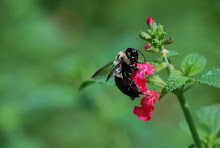Create a lively scene outside your windows by inviting birds in the garden with bird-attracting plants, birdbaths and bird feeders. Providing food for birds comes with the responsibility to keep the birds healthy. Bird feeders should be cleaned periodically to help prevent the spread of disease. Some sources recommend feeders be cleaned every time they are filled; others suggest cleaning thoroughly at least four times a year.
Never use household cleansers to clean a bird feeder. Solutions made from chlorine bleach or vinegar are safe and effective cleaners. Vinegar is more gentle than chlorine, but both are safe if diluted and rinsed well. Mix a weak chlorine bleach solution (one part chlorine bleach to 10 parts water). Empty the bird feeder; then rinse and immerse it in the bleach solution for a few minutes. Rinse the feeder thoroughly. Allow it to dry before filling it with birdseed. Make sure there are no sharp objects on the feeder that could cut a bird, allowing bacteria and viruses to infect the cut.
Keep seed dry and stored in a secure container to prevent mice and insects from contaminating the birdseed. Never fill a feeder with moldy, sour-smelling or wet seed. Never offer birds moldy bread. If squirrels are a problem, try one of the hot pepper additives that actually add vitamins for the birds.
Mulching the area under the feeder makes it easier to clean and freshen, remove sprouted seeds and view feeders. The lack of plant cover also makes it more difficult for a preying cat to surprise the birds. When purchasing feeders, consider maintenance as well as design. It is important to keep the birds healthy as well as fed.
Subscribe to:
Post Comments (Atom)

No comments:
Post a Comment